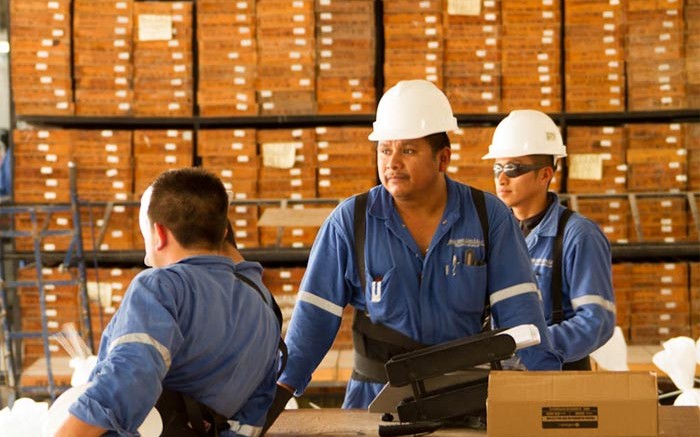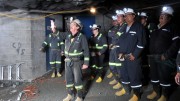In the first four months of this year alone, kidnapping incidents have touched Torex Gold Resources (TSX: TGX; US-OTC: TORXF) and Goldcorp (TSX: G; NYSE: GG) in Mexico’s Guerrero state, and Pan African Minerals’ Tambao manganese mine in Burkina Faso.
The headlines have been alarming for miners and investors, especially since many kidnappings go unreported.
“For every incident that you see in the press, there are numerous that never make it to the light of day,” global product manager for kidnap and ransom and crime insurance at Chubb Insurance Group Christopher Arehart says.
Mining companies are uniquely exposed to kidnapping risks because they often operate in remote areas in countries with low political stability, and attract attention by bringing in big equipment and hiring locals.
The risks vary from country to country, and even from region to region within countries. But kidnappings are much more common in countries with low political stability, where law enforcement is corrupt, inept, ill-trained or underfunded, and where the judicial system may also be corrupt, and laws not as stringent.
Not surprisingly, Mexico is a hot spot for kidnapping activity — Chubb estimates there are at least 10,000 kidnappings each year, while the Mexican government says there are up to 100,000 “express kidnappings,” where people are taken to ATMs to empty out their bank accounts.
Wes Odom, executive vice-president of operations for the Ackerman Group, a security firm that handles kidnap and extortion cases for Chubb clients, says that while there are dozens of Canadian companies with mines and projects in Mexico, which he calls “the kidnap capital of the world,” expats are rarely targeted.
In Goldcorp’s case, four employees were kidnapped off-site as they were travelling home (the transportation was not supplied by the company) after a shift. In Torex Gold’s case, an employee and three contractors were taken as part of a group of 13 people from a local community.
“We’re not sure totally as to why they shy away from Americans and Canadians, but we think part of the reason is because of our law enforcement communities, whether it’s the FBI or the RCMP,” Odom says. “The Mexican kidnap gangs, which are often colluding with the police down there, they know that if you kidnap an American or Canadian, you’re going to bring in really high-level law enforcement on top of you, and they don’t want any part of that.”
The Ackerman Group responds to 10 to 12 kidnapping incidents a year for Chubb clients across various industries.
Chubb’s Arehart adds that kidnappers often operate as a business of sorts, in low-risk, high-reward environments.
“They’re really looking for money,” Arehart says. “So they operate in places where they’re not going to get caught and where they can actually get ransom or extortion money paid to them.”
In fact, Odom confirms that ransoms are almost always paid out in kidnap for ransom cases, and kidnappers are rarely caught.
Even so, the ransoms being paid out to kidnappers in Mexico have declined dramatically in recent years, as more middle class and lower middle victims have been targeted.
“A lot of the kidnapping now in Mexico is being done by criminal gangs who are offshoots from the big drug cartels,” Odom says. “So it’s more often penny-ante criminal gangs and the victims are much lower level, and the ransoms could range anywhere from $15,000 up to maybe $100,000 — which would probably be a very large ransom these days in Mexico.”
Recent cases
The mining sector is one of Chubb’s largest buyers of kidnap and ransom insurance in Canada.
However, there is little information in the public realm on how pervasive the problem really is.
Mining companies are unlikely to even disclose whether they have a kidnapping and ransom insurance policy, for fear of encouraging “self-kidnappings” among employees. They also don’t want employees confirming the existence of a policy — which would reimburse the company for any ransom paid; medical, rehabilitation or psychological treatment for the victim; travel expenses; and consultant fees — if they are kidnapped.
The recent incidents in Mexico have been in Guerrero state, where 37 student teachers were kidnapped from the city of Iguala last September and murdered.
However, neither Torex Gold nor Goldcorp appear to have been the targets.
In Torex Gold’s case, 12 people were kidnapped in February in Cocula, a community near the El Limon-Guajes gold mine being built at its Morelos property. One of the victims was a Torex employee, while three others worked as company contractors. Ten of the 13 were reported freed by the Mexican army and one was released by his captors.
In Goldcorp’s case, the workers were reportedly kidnapped on their way home after a shift at the Los Filos mine. Three of the four were killed, and one was released.
Goldcorp confirmed that state and federal security forces have been in the community since the incident, and that they were investigating.
Even though the kidnappings did not target the companies, they have spooked investors — particularly in junior Torex, which has seen security issues delay development at Morelos.
“The violence and security risk, locally in Guerrero state and in Mexico as a whole, is underpinned by the lawlessness in certain areas due to a combination of cartel-induced criminal activity and an elevated level of corruption,” Canaccord Genuity mining analyst Joe Mazumdar said in an emailed response to questions. “This combination has reduced Mexico’s desirability as a location for investors.”
Mazumdar points to the kidnappings, the Iguala murders, recent mid-term election violence in Guerrero and the robbery of McEwen Mining’s (TSX: MUX; NYSE: MUX) El Gallo mine in Sinaloa state as examples of Mexico’s lawlessness.
“Torex Gold’s management team is well suited for developing the Morelos gold project, however, the exogenous uncertainty created by the ‘lawlessness’ have weighed on the stock,” Mazumdar continued. “They are having trouble convincing contractors to come and work for them in the Guerrero gold belt due to the security risk. We highlight that their most recent project update indicates that the company has met their revised development goals to date, which is positive.”
As the underlying security risk has translated into a valuation issue, Mazumdar has removed Torex from his “Focus List” of preferred stocks, although he retains a “speculative buy” rating and a price target of $1.60 on the company.
Torex expects its first pour from the new mine in the fourth quarter and Canaccord forecasts commercial production by the second half of 2016.
Torex declined to comment for this story.
However, the firm has joined the local communities in lobbying for a permanent federal or state security presence in the area.
In an emailed response to questions, Christine Marks, Goldcorp’s director of corporate communications, said the company had been stepping up its security protocols well before the incident affecting its employees.
“One example is the construction of air strips, so that key m
anagement personnel who could potentially be targets spend less time travelling on roads, where they are most vulnerable, and can fly directly into the mine from a few key transportation hubs,” Marks said.
After the kidnapping, the company sent out reminder communications about reviewing existing training and reference material with regard to kidnapping prevention.
Kidnap prevention
While companies can’t discuss their security protocols in detail, Odom says simple things like staying off roads at night, or travelling with security (unarmed, in some cases, because they would be outgunned by gangs anyhow) are a good start for companies in risky areas.
Employees should also vary their routines and stay alert. Kidnappers always watch their targets before taking them, and Odom says that after the fact, kidnap victims will often remember seeing the kidnappers in the weeks before the actual event.
“When we teach kidnap prevention, the key is behaviour modification,” Odom says. “A kidnapping for ransom is always preceded by surveillance, by the group casing the target. But they’re usually casing several targets at the same time, and they will always go for the easiest target — and that means the person who’s totally predictable. He leaves the house every day at the same time, he drives the same route to work and he’s oblivious to what’s happening around him. That’s a good target for a kidnapping gang.”
Companies should also have a three-point plan, Chubb’s Arehart says.
First, the company should have a crisis management plan in place that details the protocols the company would go through in case of a threat to the mine, its employees or contractors. Anyone with exposure to the mine should be aware of and understand the plan and protocols.
Second, a crisis management team that includes legal counsel and the CEO, or someone else who could handle money issues if a payment is necessary, should be appointed. The team should also conduct tabletop exercises and mock scenarios to ensure that the plan and protocols work.
And lastly, the company should have a relationship with a risk consultant such as the Ackerman Group — typically through its insurance policy — that gives it access to a team with experience getting kidnap victims back alive.
Other jurisdictions
While most kidnappings in Latin America are of local people, westerners are the primary targets for kidnappings in Africa and the Far East.
In early April, a Romanian member of Pan African Minerals’ security team was kidnapped at its Tambao manganese mine in northern Burkina Faso’s Sahel region. Reuters reported that five gunmen, who fled in the direction of the border with Mali, were involved in the attack, during which two people were wounded. Pan African is a subsidiary of Frank Timis’ Timis Corp.
Odom says Mali and Mauritania in West Africa, where al Qaeda in the Islamic Magreb is active, are big areas of concern for miners.
Politically motivated kidnappings, where something more difficult to deliver than cash is demanded, are much harder to deal with than ransom cases, Chubb’s Arehart says.
“The best way to handle a political kidnapping would be to turn it into a ransom kidnapping,” Arehart says.
Odom, a former CIA officer, says that based on his 24 years of experience with the Ackerman Group, politically motivated kidnappings only make up 10–15% of all cases.
However, they do happen — a Braeval Mining executive (now Oban Mining [TSX: OBM]) was kidnapped by the guerrilla group the National Liberation Army (ELN) in January 2013. The group demanded that the junior give up its Snow Mine exploration property in Colombia, claiming the land was stolen from locals.
The executive, Gernot Wober, was released after being held for 221 days, after the company said it was leaving Colombia. The company did not disclose whether a ransom was also paid.
While Colombia used to be a kidnap hotspot, the country has managed an impressive turnaround by clamping down on the guerrilla groups, the Revolutionary Armed Forces of Colombia (FARC) and the ELN, that were behind so many of them.
For the last two or three years, the country has seen under 200 cases a year — down from a peak of anywhere from 3,500 to 5,000 cases per year of classical kidnappings for ransom in 2000.



Be the first to comment on "Kidnappings highlight miners’ security risks"